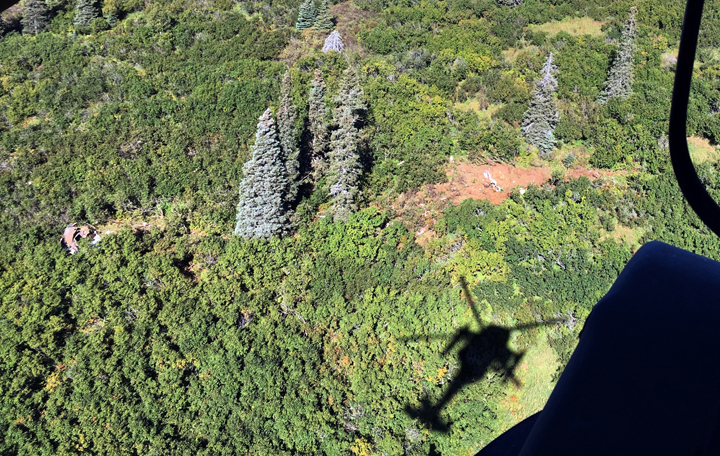ANCHORAGE — Rough terrain complicated efforts to recover the bodies of four Alaskans and a Montana man who were killed when two small planes collided in western Alaska, authorities said Thursday.
On one plane, pilot Harry Wrase, 48, of Wasilla and his passengers, Steven Paul Andrew, 32, of Kenai and Aaron Jay Minock, 21, of Russian Mission, were killed in the Wednesday morning crash.
In the other plane, pilot Zach Justin Babat, 44, of Montana and his passenger, Jeff Thomas Burruss, 40, of Haines, were killed. A hometown for Babat was not immediately disclosed.
Wrase was flying a Ravn Alaska Cessna 208 Caravan from Russian Mission to the nearby village of Marshall, troopers said. Babat was piloting a Renfro’s Alaskan Adventures Piper Super Cub and heading for a hunting camp.
There were no survivors in the crash 6 miles northwest of the village of Russian Mission, 375 miles west of Anchorage. Troopers were heading to the scene Thursday to retrieve the bodies, agency spokeswoman Megan Peters said.
Rough terrain and the technically complicated nature of midair collisions are making the investigative response and recovery of the bodies difficult, said Clint Johnson, the head of the National Transportation Safety Board’s Alaska division.
The plane wreckages are about half a mile apart at the crash scene, which covers a large area accessible only by helicopter, Johnson said. An NTSB investigative team and troopers reached the scene late Wednesday afternoon, landing a quarter-mile from the Cessna, then hiking through woods thick with alder trees. There was no time for troopers to recover the victims Wednesday before responders had to depart before night fell, Johnson said.
“This is a very challenging area for what we need to do,” he said, adding the NTSB investigators were heading out again Thursday.
Piecing together what caused the planes to slam into each other means considering multiple variables, including what electronic equipment was on board and what frequencies were being monitored, Johnson said. Each plane had high wings located above its fuselage, raising the question of possible blind spots. The weather was clear, so it’s possible the sun might have temporarily blinded at least one of the pilots. In the non-radar area, pilots follow the rule of “see and avoid,” Johnson said.
“What we need to do is be able to re-create basically what took place during the accident sequence,” he said.
Given the vast role of aviation in the vast state, there are occasional midair collisions, including a nonfatal one in early August at the Wasilla airport, Johnson said. “I wouldn’t say that they’re rare, but they’re not common,” he said.
Representatives of Renfro’s did not immediately respond to requests for further information Thursday. Ravn said in a statement issued Wednesday that its flight was operated by Hageland Aviation Services doing business as Ravn Connect.
“On behalf of all the employees of the Ravn family we are deeply saddened by this news,” the commuter company said. “Our hearts and prayers go out to the family and friends.”
Fatal Hageland crashes in 2013 and 2014 played a part in the NTSB issuing an urgent recommendation in 2014 that Ravn companies undergo a comprehensive safety audit.
Ravn has since made positive changes, Johnson said. “As far as the NTSB is concerned, that’s history at this point right now,” he said.
—
Read more news:
Munoz can’t ‘remove’ her letters, even if she wants to, court official says
After hundreds of years, Huna Tlingit return to ancestral homeland of Glacier Bay

